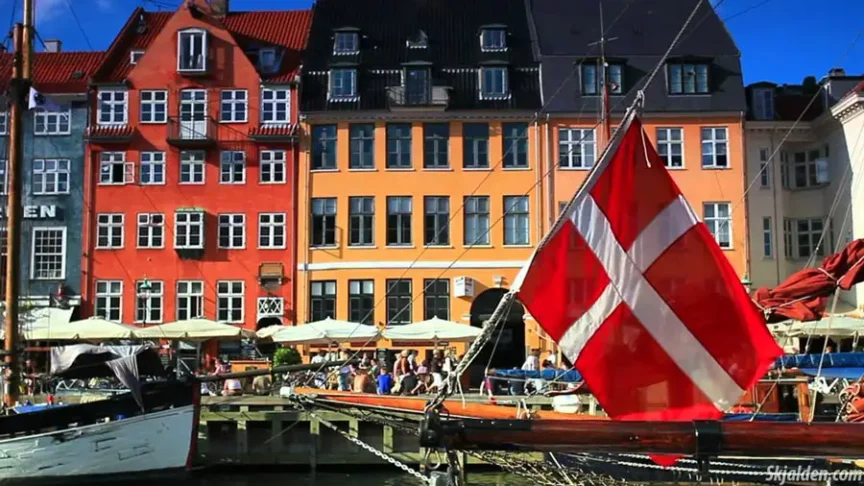Danish is the official language of Denmark but it is more than just a means of communication for its people. It’s a language that has evolved over many centuries, influenced by Denmark’s remarkable past and its interactions with other cultures. The history of the Danish language is intertwined with the Vikings, known for their exploration and conquests, which left a permanent mark on the language. Elements of Old Norse, the language of the Vikings, are still evident in modern Danish.
But Danish isn’t just confined to the borders of Denmark. It has spread its wings to the Faroe Islands and Greenland, regions that have been under Danish rule. The Faroese and Greenlandic languages, while distinct, share a historical bond with Danish. This linguistic connection is a reminder of Denmark’s past as a powerful kingdom with far-reaching influence.
The Influence of Foreign Languages
Denmark’s history isn’t just about its own language but also about the languages it has embraced. English, for example, is widely spoken in Denmark, a reflection of the country’s openness to the global community. The Danish education system places a strong emphasis on English, making it a second language for many Danes. This bilingual approach has roots in Denmark’s trade and diplomatic relations, stretching back to the Middle Ages when English and German traders frequented Danish ports.
German, too, has played a significant role in the Danish linguistic landscape. Southern Denmark, once part of the German Confederation, has seen a significant influence of the German language. This historical connection is evident in the prevalence of German as a third language in Danish schools, highlighting the country’s intertwined history with its neighbor to the south.
Multilingual Denmark: Beyond Danish
Denmark’s linguistic landscape extends beyond its native tongue, Danish. A significant portion of the population is proficient in several foreign languages, reflecting the country’s global engagement and educational priorities.
English, especially, is widely spoken, with about 86% of Danes fluent in it. This proficiency is largely due to the early introduction of English in Danish schools, combined with Denmark’s active participation in international business and culture. The presence of English in Denmark facilitates communication with the global community and reflects the country’s modern, international outlook.
German also plays a vital role in Danish linguistic skills. Approximately 47% of Danes can converse in German, a statistic influenced by historical ties and Denmark’s geographic proximity to German-speaking countries. German is often taught as a third language in schools, underscoring the longstanding cultural and economic connections between Denmark and Germany.
French and Spanish, while not as prevalent as English or German, are increasingly popular choices in Danish educational institutions. These languages represent Denmark’s recognition of the growing importance of linguistic diversity in a globalized world.
The Enduring Legacy of Scandinavian Languages
The linguistic ties between Denmark, Sweden, and Norway run deep, rooted in a shared history that is both complex and fascinating. These Scandinavian languages, each a descendant of Old Norse, have evolved alongside each other, maintaining a remarkable level of mutual intelligibility. This linguistic kinship is not just a matter of similar words and grammar; it’s a reflection of a shared past that has shaped the Nordic region.
One of the most significant historical events that link these languages is the Kalmar Union. Established in the late 14th century, this union brought together Denmark, Norway, and Sweden under a single monarch. During this period, the interaction among these nations was not just political but also cultural and linguistic. The Kalmar Union left an indelible mark on the Scandinavian languages, intertwining them in ways that are still evident today.
This shared linguistic heritage acts as a cultural bridge, connecting the people of these countries. For instance, it’s not uncommon for Danes, Swedes, and Norwegians to understand each other’s languages to a certain degree, making communication across borders relatively seamless. This mutual understanding fosters a sense of kinship and cooperation in the Nordic region, echoing the collaborative spirit of the Kalmar Union.
Moreover, the similarities among these languages have practical implications. They facilitate cross-border trade, cultural exchange, and educational opportunities, reinforcing the strong ties among these nations. In literature, film, and music, shared linguistic elements allow for a rich exchange of cultural products, enriching the cultural landscape of the entire region.
The Role of Language in Denmark’s Cultural Identity
Language in Denmark is more than a tool for communication; it’s a key component of the country’s cultural identity. Danish, in its essence, encapsulates the spirit of the nation, reflecting its values, traditions, and history. The language’s evolution over the centuries mirrors the transformation of Denmark from a Viking stronghold to a modern nation.
The influence of Danish extends beyond the mainland, touching the lives of those in the Faroe Islands and Greenland. In these territories, Danish acts as a link to the mainland, while also respecting and coexisting with local languages. This linguistic relationship exemplifies Denmark’s approach to its territories, one based on mutual respect and cultural exchange.
As Denmark continues to engage with the global community, the role of English and other foreign languages becomes increasingly prominent. Yet, this doesn’t diminish the importance of Danish. Instead, it highlights the country’s adaptability and openness to the world, while firmly holding onto its linguistic roots.
In essence, the language spoken in Denmark is more than a means of communication. It’s a reflection of the nation’s soul, embodying its past, present, and future. As Denmark strides into the future, its language will undoubtedly evolve, continuing to be a cornerstone of its cultural identity.
Photo credit: Pachi zenco
